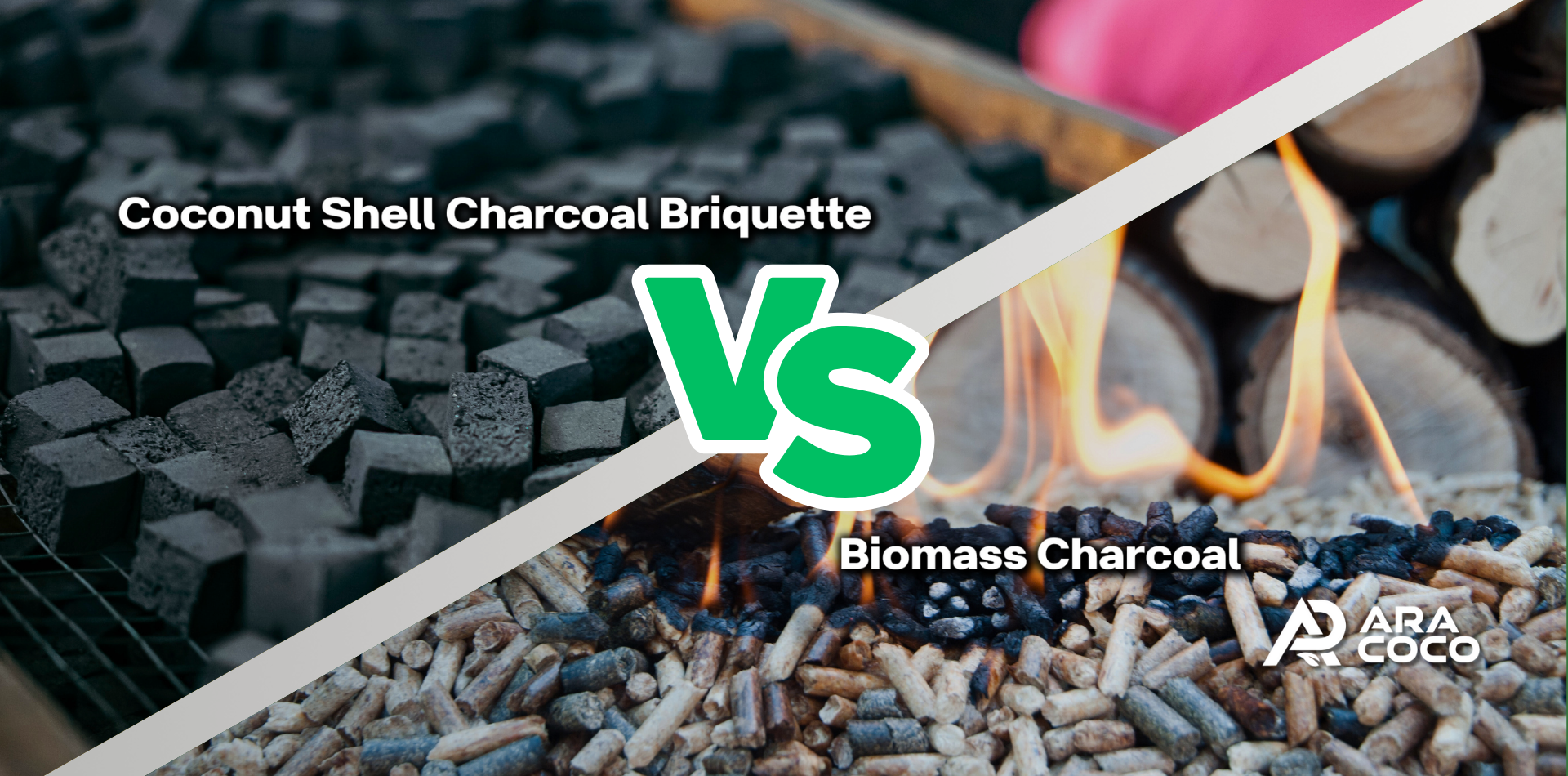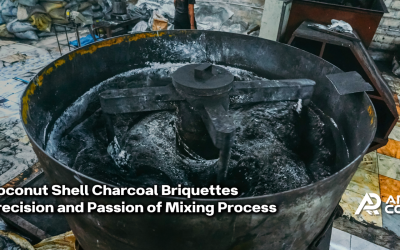Coconut Shell Charcoal Briquette vs. Biomass Charcoal: Comparing to Understand the Differences
In the quest for sustainable and efficient fuel sources, the comparison between coconut shell charcoal and biomass charcoal is increasingly relevant. This article delves into a detailed comparison of these two types of charcoal, focusing on their origin, production, burning efficiency, heat production, and ash output. Understanding these differences is crucial for making informed decisions, especially for those in industries where the choice of charcoal significantly impacts the outcome.
The debate between coconut shell charcoal and biomass charcoal is not just about their end-use but also encompasses their environmental impact, efficiency, and suitability for various applications. As global awareness of sustainable practices grows, this comparison becomes more pertinent for consumers and businesses alike.
Coconut Shell Charcoal Briquette vs. Biomass Charcoal: The Origin and Production
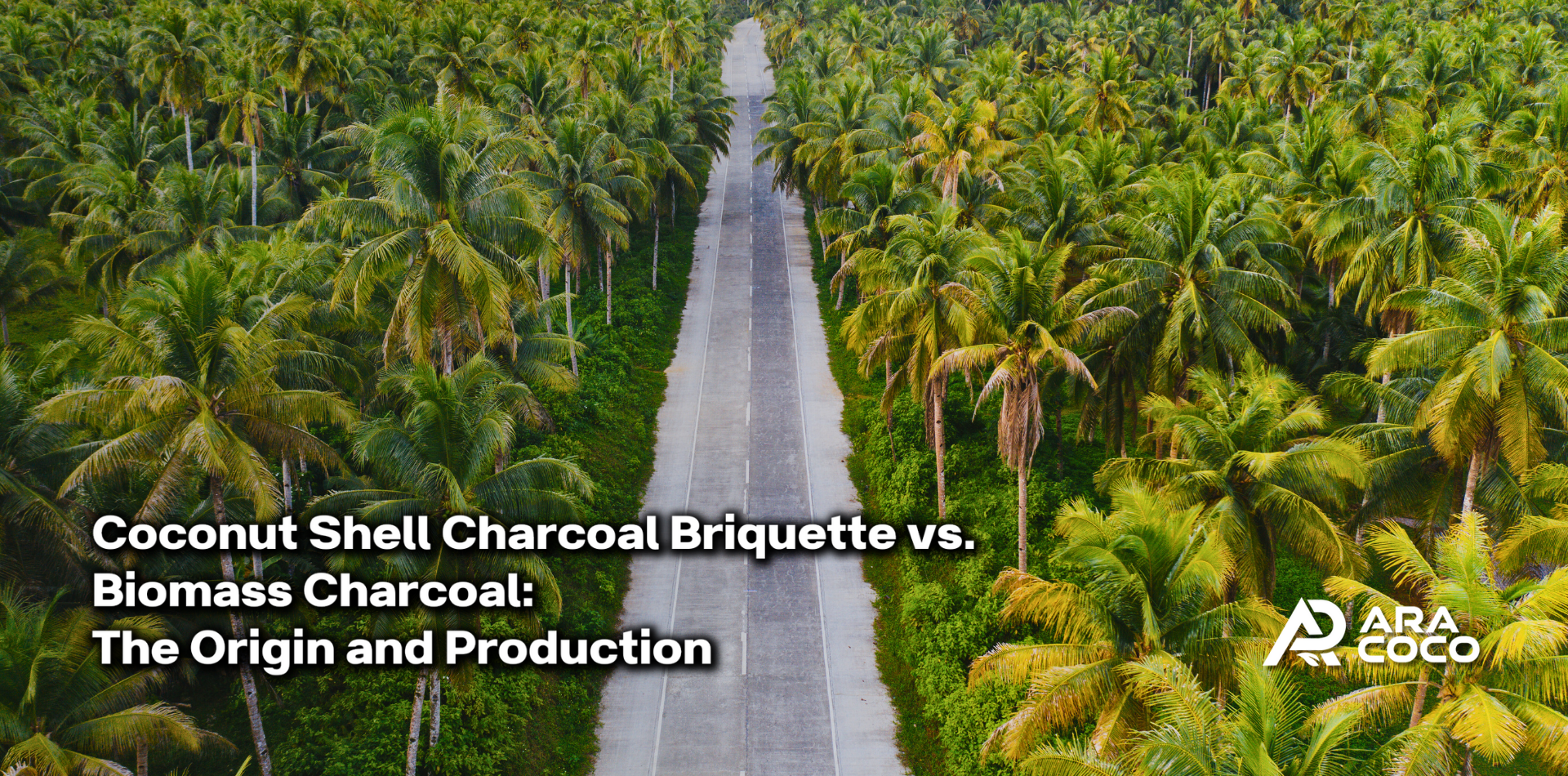
Coconut shell charcoal is derived from the hard shell of coconuts, a byproduct of the coconut industry. Its production involves carbonizing the shells at high temperatures, a process that preserves the natural qualities of the shell. This method is environmentally friendly, as it utilizes a waste product and typically involves low emissions.
Biomass charcoal, on the other hand, is made from organic waste materials like wood chips, agricultural residues, and other biomass. The production of biomass charcoal is part of a broader waste management and energy recovery process. While it is a sustainable option, the quality and characteristics of biomass charcoal can vary significantly based on the source materials.
The Difference in Burning Efficiency
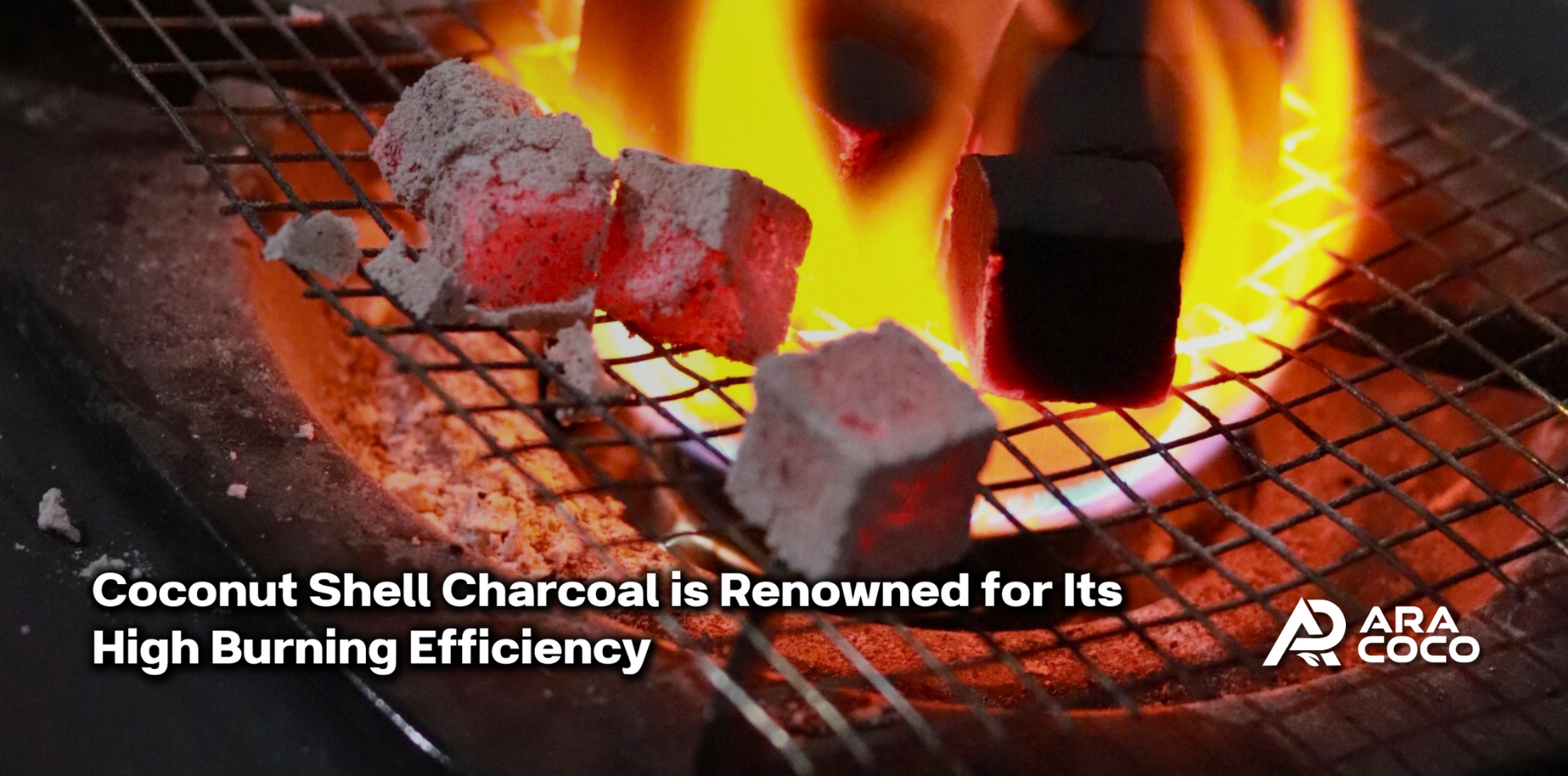
Coconut shell charcoal is renowned for its high burning efficiency. Its dense structure allows for a longer burn time, making it a more economical choice in the long run. This efficiency is particularly beneficial for applications where sustained heat is required.
In contrast, biomass charcoal’s burning efficiency can vary widely. While it is a viable option for energy recovery from waste, its inconsistent density and composition can lead to variable burn times and efficiency. This inconsistency can be a drawback in applications requiring precise heat control.
Heat Production
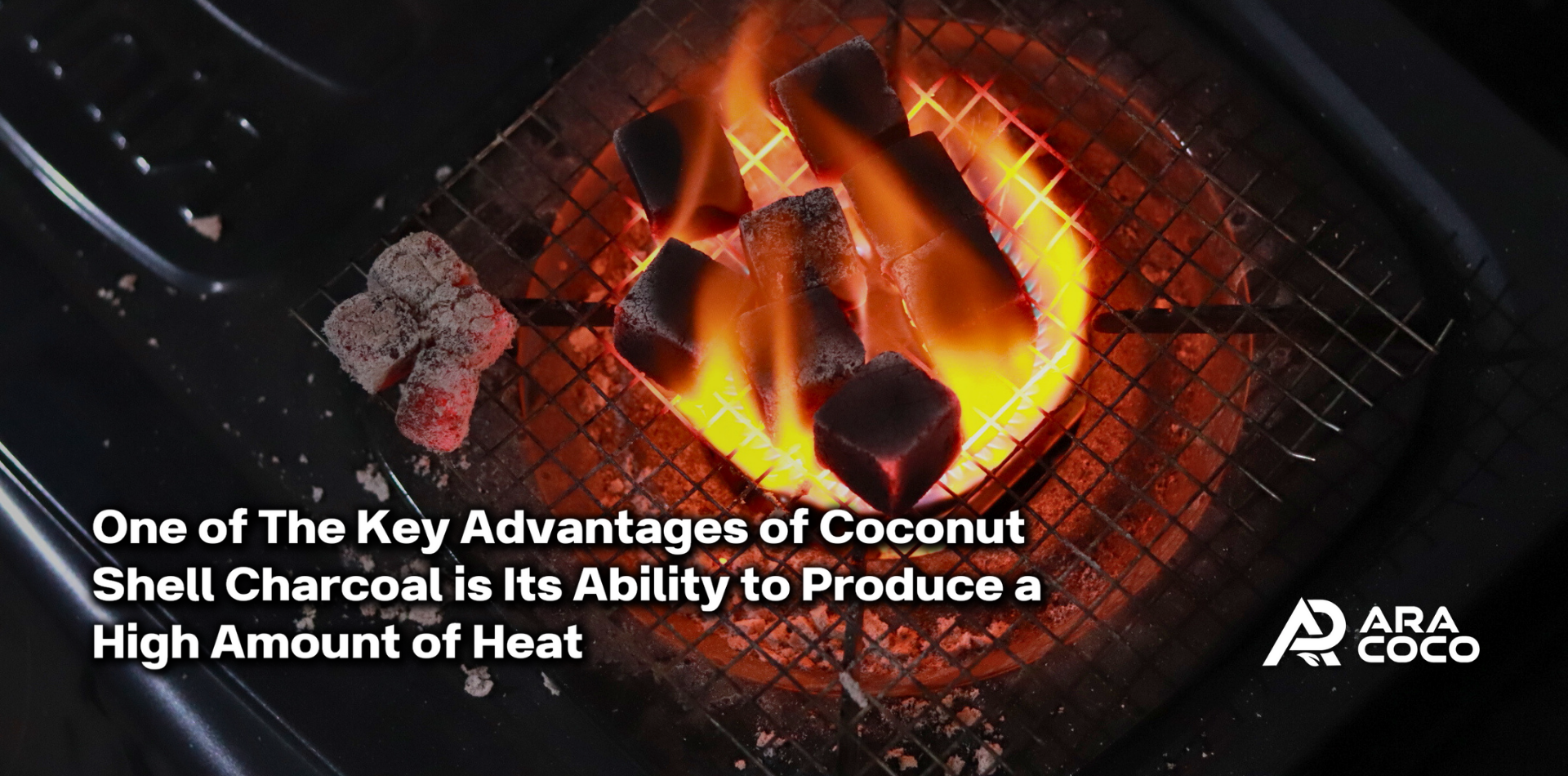
One of the key advantages of coconut shell charcoal is its ability to produce a high amount of heat. This makes it an ideal choice for applications requiring intense heat, such as in industrial processes or in shisha smoking, where consistent and high heat is crucial for the best experience.
Biomass charcoal, while capable of producing a good amount of heat, may not reach the same levels as coconut shell charcoal. The heat production of biomass charcoal is influenced by the type of biomass used and the production process, which can lead to variability in performance.
Ash Production

Coconut shell charcoal is known for its minimal ash production. This quality makes it a cleaner option, reducing the mess and making cleanup easier. The low ash content also indicates a higher carbon content and a more efficient burn.
Biomass charcoal typically produces more ash compared to coconut shell charcoal. The higher ash content can be attributed to the varied organic materials used in its production. This higher ash production can be a concern in applications where cleanliness and minimal residue are important.
Which is Better? Coconut Shell Charcoal Briquette or Biomass Charcoal
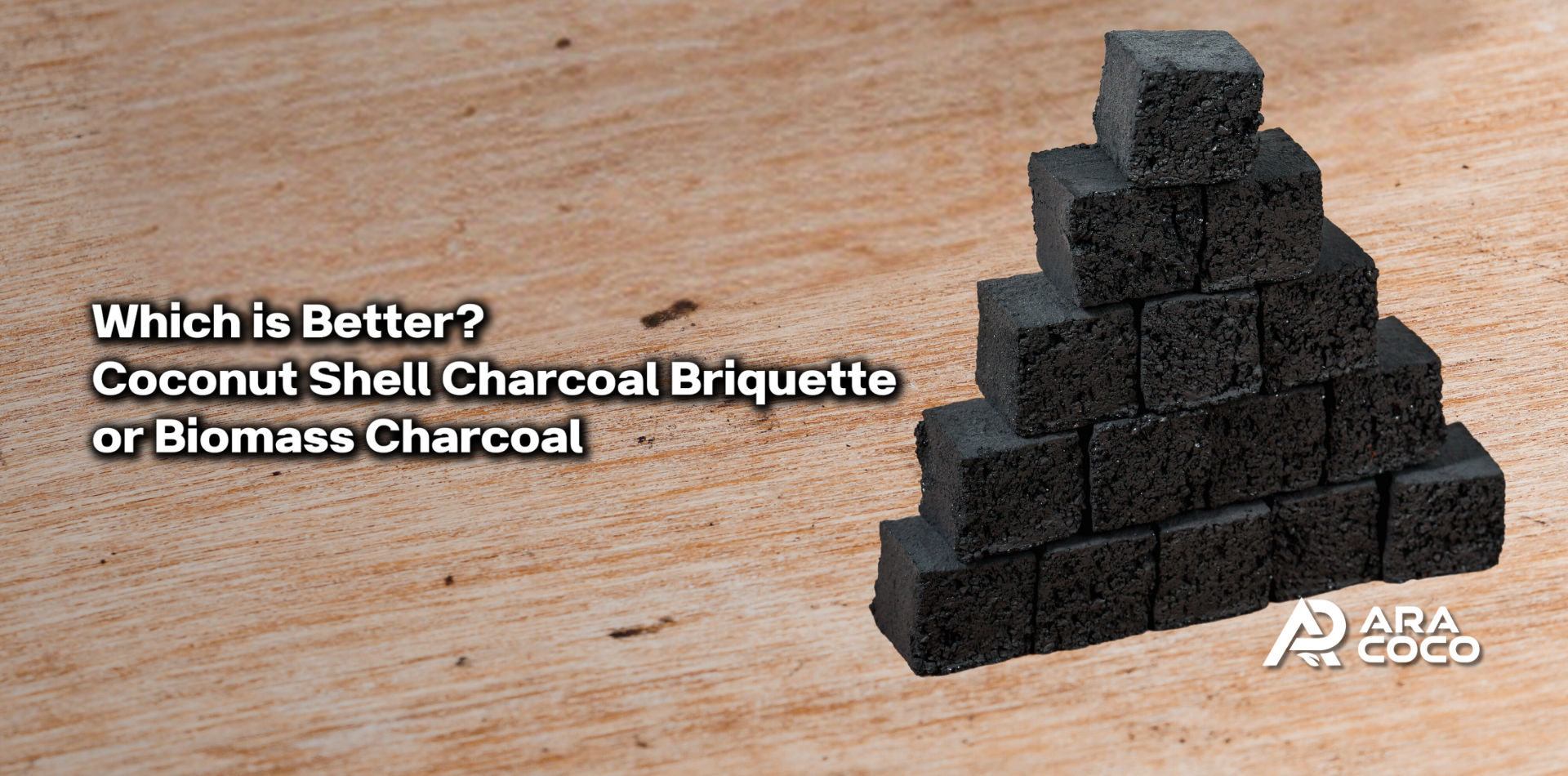
Determining which type of charcoal is better depends on the specific needs and applications. Coconut shell charcoal, with its high heat production, efficiency, and low ash content, is often the preferred choice for shisha smoking and other applications requiring clean and intense heat. Biomass charcoal, while sustainable and useful in waste management, may be more suited for applications where the variability in heat and ash production is less of a concern.
When choosing between coconut shell charcoal briquette and biomass charcoal, consider your specific requirements and the application. For high-quality coconut shell charcoal that meets your needs, contact us. Our team is ready to provide expert advice and help you select the best charcoal solution.
Already know what is the difference between coconut shell charcoal and biomass charcoal, you can check this articles too:
The Benefits of Low Ash in Coconut Shell Charcoal Briquettes
In the realm of charcoal briquettes, the ash content significantly impacts performance and user experience. At Aracoco, we prioritize the production of low-ash coconut shell charcoal briquettes,...
Coconut Shell Charcoal Briquette Production: Why Tapioca Flour Outperforms Cassava Flour?
Coconut Shell Charcoal - In the realm of coconut shell charcoal briquette production, the choice of binder can significantly impact the quality and performance of the final product. At Aracoco, we...
Coconut Shell Charcoal Briquettes Precision and Passion of Mixing Process
In the world of coconut shell charcoal briquettes, precision and passion are paramount. At Aracoco, our meticulous approach to crafting each briquette ensures not only a high-quality product but...
